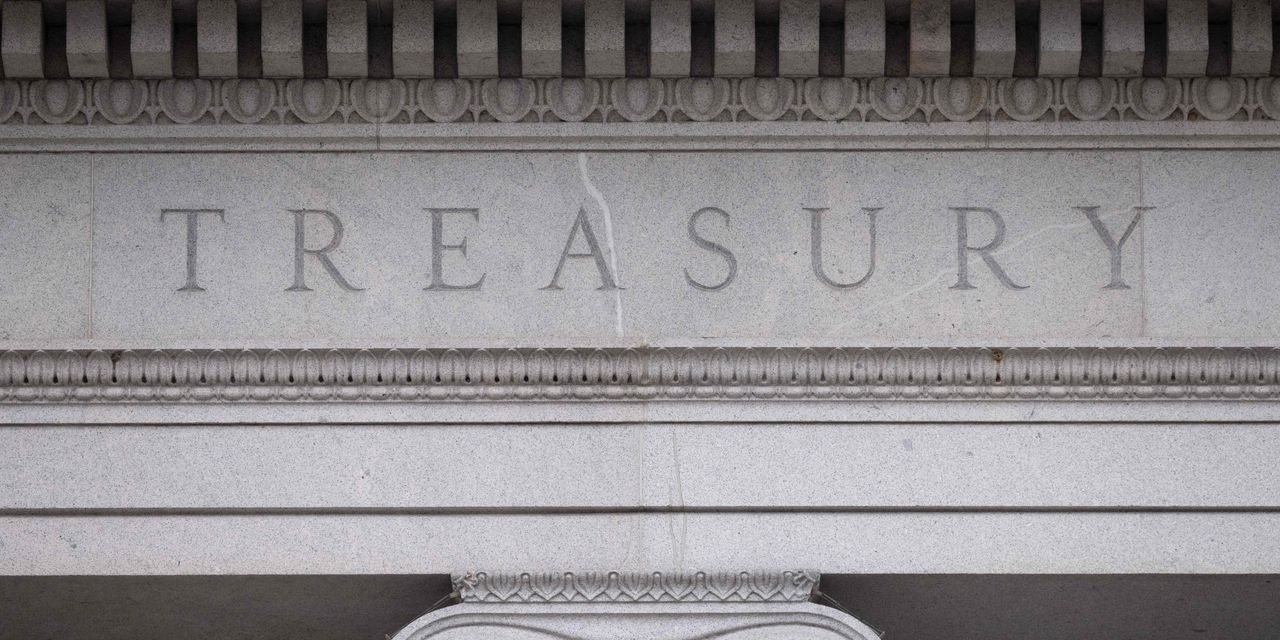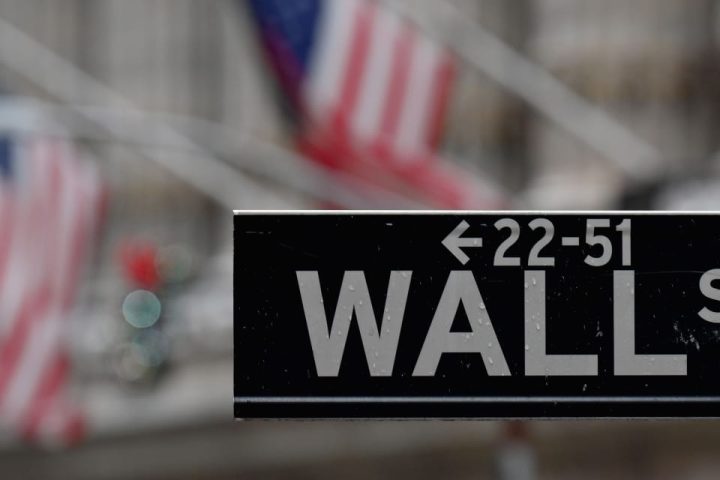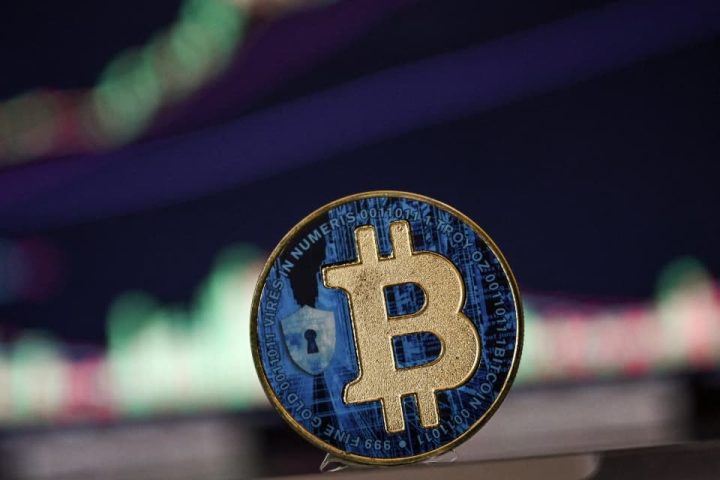As much of the U.S. economy struggles with the burden of rising interest rates, many top investors are questioning the wisdom of buying U.S. Treasurys — even though they are paying yields not seen in more than a generation.
“We’re going to have a debt crisis in this country,” billionaire investor Ray Dalio said during an interview at a recent event in New York organized by the Managed Funds Association.
Dalio pointed to projections showing that the U.S national debt will explode to more than $52 trillion in 2033, with a growing share of the federal budget dedicated to paying interest on the debt.
“How fast [the crisis] transpires,” he said, “is going to be a function of that supply-demand issue, so I’m watching that very closely.”
Big-name investors like Dalio are not the only ones concerned about the state of the Treasury
BX:TMUBMUSD10Y
market and the supply of new bonds set to hit the market in coming years if Congress can’t cut the budget deficit.
In One Chart: The 10-year Treasury yield looks priced to cause a recession. But is it time to buy?
The Biden administration — and notably Treasury Secretary Janet Yellen — has claimed reforming the structure of the Treasury market as a top priority, with the goal of avoiding Federal Reserve bailouts like those required during the repo-market crisis of September 2019 and during the market gyrations that occurred in the earliest days of the COVID-19 pandemic in March 2020.
Yellen said last October that “the Treasury market today is reflecting greater uncertainty about the economic outlook.” Her department, she said, is “working with financial regulators to advance reforms that improve the Treasury market’s ability to absorb shocks and disruptions, rather than to amplify them.”
Questions remain, however, as to whether regulators are moving fast enough and comprehensively enough to avoid another market failure like that of March 2020, according to law professor Yesha Yadav of Vanderbilt University, who studies financial regulation and market structure.
“There should be huge urgency in the Treasury coordinating with regulators to push an agenda forward here, and it’s not coming together as fast as it should,” she told MarketWatch.
‘Much work to be done’
The market for U.S. Treasurys is regulated by no fewer than five entities: the Federal Reserve Board, the Federal Reserve Bank of New York, the Securities and Exchange Commission, the Commodity Futures Trading Commission and the Treasury Department itself.
Regulators in Washington move slowly, and when five must work in tandem the pace can be even more deliberate, which is why the Inter-Agency Working Group on Treasury Market Surveillance has been convened to promote collaboration on the issue.
Josh Frost, assistant secretary for financial markets at the Treasury, said at a conference last month that regulators have “made significant progress in developing policies that would help make the Treasury market more resilient, but there is still much work to be done.”
Indeed, much of the progress touted in government speeches and reports on the topic is prospective in nature, including the proposal of policies that would enhance oversight and data collection of trading venues and dealers, studies on other policies like the promotion of “all to all” trading whereby investors could directly trade Treasurys with each other, and a buyback program to be launched in 2024 that could help dealers offload older, less desirable government bonds.
Yadav said these proposals are welcome but insufficient “relative to what’s happening in the market, which is bearing enormous strains on a continuous basis.”
No buyers at all
In March 2020, investors around the globe began to understand the economic implications of the global coronavirus outbreak — declared a pandemic by the World Health Organization on March 11 of that year — and they panicked, selling whatever assets they could for cold, hard cash.
U.S. stocks cratered, with the Dow Jones Industrial Average
DJIA
falling nearly 10% on March 12. Even more concerning was that the market for U.S. Treasurys, by some accounts, simply stopped functioning. The dash for cash was so great that it became difficult to find buyers for U.S. government debt, arguably the safest and most sought-after financial instrument in existence.
Market Extra: Why the stock market might not bottom until investors surrender and jump back into bonds
“The trillion-dollar Treasury market, which is the foundation for all other financial trades, was lurching up and down in stomach-churning spasms,” wrote financial historian Adam Tooze in his analysis of the COVID crisis. “On the terminal screens prices danced erratically. Or, even worse, there were no buyers at all.”
The events of 2020 represented a culmination of several episodes of Treasury-market instability, including flash crashes in yields in 2014 and 2018 and stresses in the repo market for Treasurys in the fall of 2019.
It’s these events that have motivated regulators to reform the structure of the market for U.S. Treasurys, which Yadav described as “profoundly unregulated in many ways” even as it “is expected to work when every other market doesn’t.”
The rise of the algos
The market for U.S. government debt has long been dominated by large banks
KBWB
with special relationships with the U.S. Treasury and New York Fed. These so-called primary dealers are obligated to submit bids during Treasury auctions and are the New York Fed’s trading counterparties as it buys and sells bonds to implement monetary policy.
The rise of electronic trading over the past 15 years has revolutionized the Treasury market, as high-frequency-trading companies deploying sophisticated algorithms have taken business from primary-dealer banks.
“What high-frequency trading has done is create a lot more competition and change the incentives for primary dealers from protecting a profitable market to seeing it as a very competitive space” that they will abandon if it becomes unprofitable, Yadav said.
“On numerous occasions, March 2020 included, dealers disappeared and high-frequency traders disappeared,” she added. “This is becoming a very competitive space, and we have no understanding of how to address the instability arising from that competition.”
Kevin McPartland, head of market structure and technology research at the data analytics company Coalition Greenwich, said in an interview that high-frequency-trading firms and other nonbank traders of government securities, like hedge funds, have stepped in to provide liquidity because traditional banks don’t have the capacity.
That’s in part because post-financial-crisis regulations have limited banks’ ability to house risk on their balance sheets and in part because the size of the national debt has grown significantly.
“The upside is we have many more market participants providing liquidity in different ways and for different reasons than we had back then, and markets are much more efficient and electronic than they were 15 years ago,” McPartland said.
But regulators don’t have a clear view of the operations of this new breed of bond dealer, often unregistered with the Securities and Exchange Commission despite growing significance to the market.
The SEC, under Gary Gensler, has done more than any other regulator to push for bond-market reforms, proposing several rules last year that are still under consideration by the agency.
The first would require more securities companies to register with the government as Treasury dealers, while another seeks to require a larger share of government-bond trades to be centrally cleared. A third proposal would tighten requirements on electronic platforms traders use to submit bids and offers.
Other regulators, like the Fed and the Treasury, have been less aggressive, and there is little evidence that regulators are collaborating effectively to create a coherent plan for market-structure reform, Yadav said.
“Treasury and the Financial Stability Oversight Council need to think about a total restructuring of the market,” she said, referring to the group of regulators charged with monitoring the stability of the U.S. financial system. “That includes [a] plan for transparency and reporting, strains in dealer capacity and how to address problems in the repo market.”
Market Extra: How Treasury market upheaval is rippling through global markets, in 4 charts
Cutting the deficit
McPartland of Coalition Greenwich cautions against radical reforms to a Treasury market that has functioned well outside of a handful of crisis events, noting that the Monday after the failure of Silicon Valley Bank in March, the Treasury market traded $1.4 trillion in volume.
“To me,” he said, “that’s not a market with structural issues, when it can see that level of turnover in a tumultuous period.”
The sheer amount of government debt that the Treasury must issue in the coming years, as deficits are projected to remain large by historical standards, is a potential variable that could challenge stability, he said.
“We’re getting into a supply-and-demand problem,” he said. “So far, so good, and people are liking the returns these bonds are providing today, but we don’t know that will continue into perpetuity.”
There is not much discussion on Capitol Hill or at the White House about a serious bipartisan plan for deficit reduction. President Joe Biden has proposed large increases in taxes on the highest-earning Americans and on corporations, while the Republican-led House of Representatives has been unable to coalesce around a plan, though the GOP generally favors reducing the deficit through spending cuts without tax increases.
From the archives (November 2022): Some Republican senators are talking openly about Social Security cuts
Market Extra: Wall Street worries U.S. could lose last AAA rating as political chaos fuels government-shutdown fears
Henrietta Treyz, director of macro policy research at Veda Partners, said in a recent note to clients that there’s reason to believe debate over the deficit may be rekindled as part of the effort to forge a bipartisan compromise to fund the government for the year.
She suggested that Congress may agree to form a “deficit commission” to study the issue but that it will likely lead nowhere. “Thin majorities and a refusal to compromise will render the 118th Congress incapable of passing anything but the bare minimum needed to keep the government open,” she wrote. “We maintain that material deficit reduction is not coming and federal spending is more likely to rise from here than drop.”
Read the full article here







